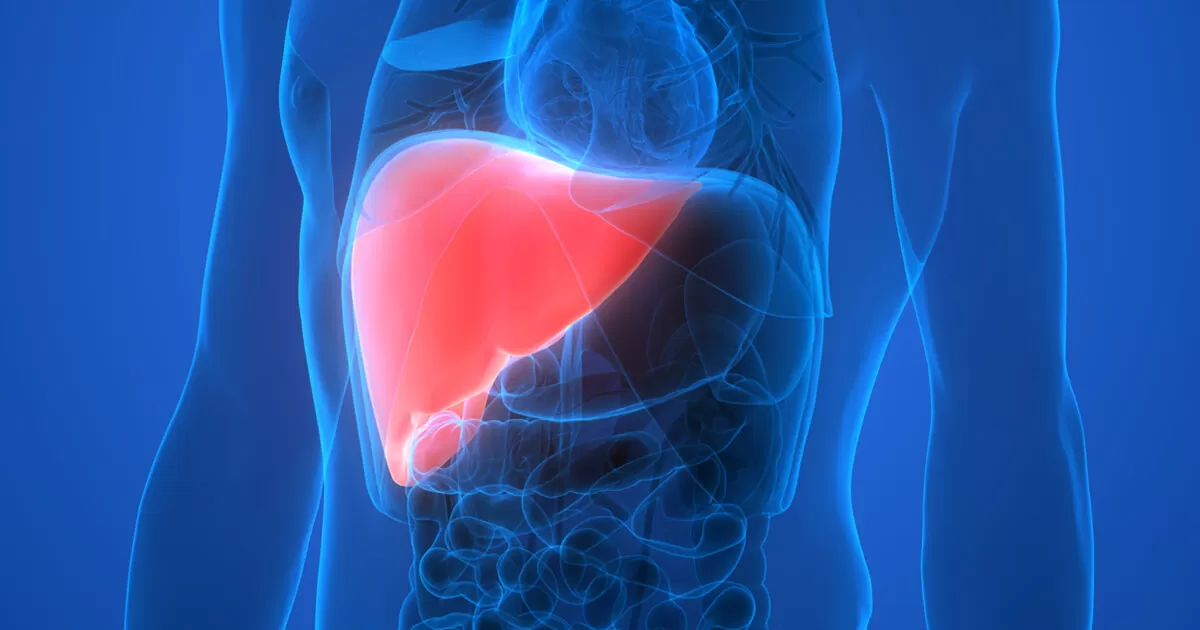Exploring NASH - Nonalcoholic Fatty Liver Disease

What is NASH?
Did you know that you can get liver disease even if you don’t drink alcohol? Nonalcoholic fatty liver disease (or NAFLD) is a condition in which fat builds up in the liver. NASH (or nonalcoholic steatohepatitis) is a type of NAFLD that can damage the liver. NASH occurs when the fat buildup in the liver leads to inflammation (hepatitis) and scarring. NASH can be life-threatening, as it can cause liver scarring (called cirrhosis) or liver cancer. It is estimated that 3% to 5% of the global population is affected by NASH, though the disease is considered to be underdiagnosed.
Who gets NASH?
Researchers are trying to understand why some people who have NAFLD develop NASH and others don’t. The condition may be hereditary. If a person has family members who have or had NASH or NAFLD, they are at risk. Additionally, having certain health conditions may increase a person’s risk to develop NASH. These include:
- Being overweight or obese.
- Having high cholesterol or high triglyceride levels.
- Having type 2 diabetes, insulin resistance or prediabetes.
Due to the growing number of children with obesity, NASH is the most common cause of chronic liver disease in children between the ages of 2 and 19 in the United States.
What are the signs and symptoms of NASH?
NASH is known as a “silent” disease because many people present with few or no symptoms. However, some people will experience tiredness, pain and discomfort in the upper right part of the abdomen.
“My father died from liver disease many years ago. I was young and never learned any of the details. But seeing how sick he was towards the end made me decide to always take care of my health. I never drank much alcohol and tried to be as physically active as possible. So you can believe my surprise when the results of a blood test I had as part of my yearly physical showed that something was wrong with my liver. I was eventually diagnosed with NASH. It took a while for the shock to wear off, but then I set out to learn everything I could about the disease and what I was up against. My doctor and I have come up with a plan to help me manage NASH which includes a healthy diet and lots of exercise. I feel good and will do everything I can to keep feeling that way.”
RL—Patient with NASH
How is NASH diagnosed?
One of the challenges with a condition such as NASH is that most people who have it feel fine and may not know that they have a liver problem until the disease is well advanced. This can be dangerous because NASH can lead to serious liver damage.
NASH is usually first suspected when a healthcare provider finds abnormal results from routine blood or liver tests that may be part of a physical examination, or imaging tests show fat in the liver. The only way to confirm that a person has NASH is through a liver biopsy. However, a biopsy is expensive, cumbersome and carries a risk of serious complications. A biopsy is done by inserting a needle through the skin and into the liver to remove a small piece of it. This sample is then examined under a microscope to look for fat along with inflammation and damage to liver cells.
How is NASH treated?
Many healthcare providers recommend losing weight to help manage NASH. Losing weight can help reduce fat, scarring, and inflammation in the liver. If you have NASH and are overweight or obese, you may be advised to lose at least 3% to 5% of your body weight. Limiting fats and sugars in the diet can help accomplish this. You should also avoid heavy alcohol use to avoid further damaging your liver.
If someone with NASH develops cirrhosis of the liver, treatment may include medicines and various medical procedures. However, if the cirrhosis leads to liver failure, a liver transplant may be needed.
At present, there are no U.S. Food and Drug Administration or European Medicines Agency approved medicines available to treat NASH. However, research is underway to identify new ways to prevent, detect and treat the disease.
References
- 1. National Institute of Diabetes and Digestive and Kidney Diseases. Definition & Facts of NAFLD & NASH. Accessed February 20, 2018.
- 2. Rinella ME, Lominadze Z, Loomba R, et al. Practice patterns in NAFLD and NASH: real life differs from published guidelines. Therap Adv Gastroenterol. 2016;9(1):4-12.
- 3. National Institute of Diabetes and Digestive and Kidney Diseases. Cirrhosis. Accessed March 7, 2018.
- 4. National Institute of Health. Nonalcoholic Steatohepatitis. Accessed February 21, 2018.
- 5. National Institute of Diabetes and Digestive and Kidney Diseases. Symptoms & Causes of NAFLD & NASH. Accessed February 20, 2018.
- 6. National Institute of Diabetes and Digestive and Kidney Diseases. Treatment for NAFLD and NASH. Accessed February 20, 2018.
- 7. Chalasani N, Younossi Z, Lavine JE, et al. The diagnosis and management of non-alcoholic fatty liver disease: practice Guideline by the American Association for the Study of Liver Diseases, American College of Gastroenterology, and the American Gastroenterological Association. Hepatology. 2012;55(6):2005-2023.
- 8. National Institute of Diabetes and Digestive and Kidney Diseases. Eating, Diet, & Nutrition for NAFLD & NASH. Accessed February 20, 2018.
- 9. National Institute of Diabetes and Digestive and Kidney Diseases. Definition & Facts of NAFLD & NASH in Children. Accessed July 31, 2018.





